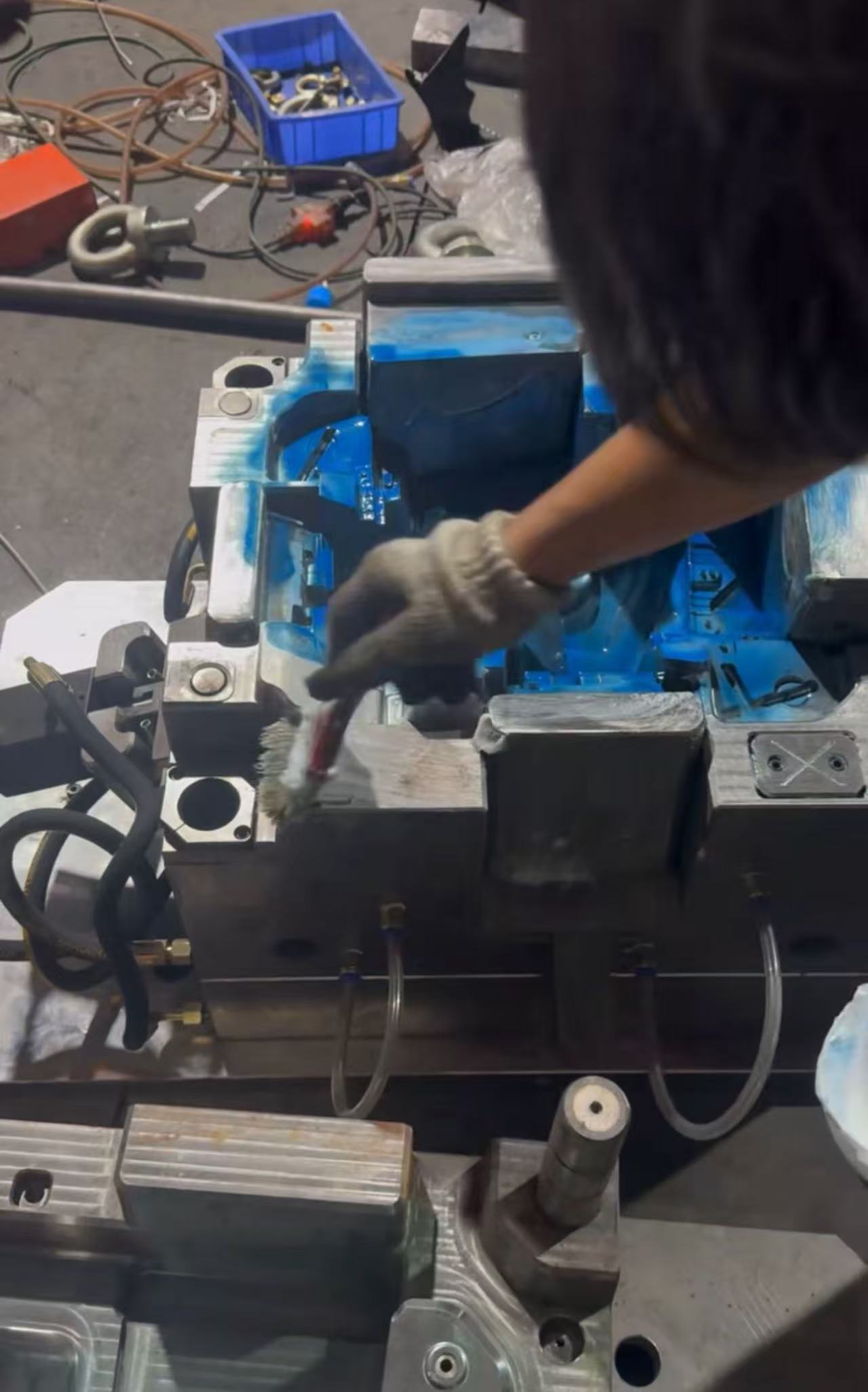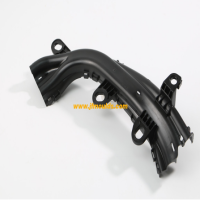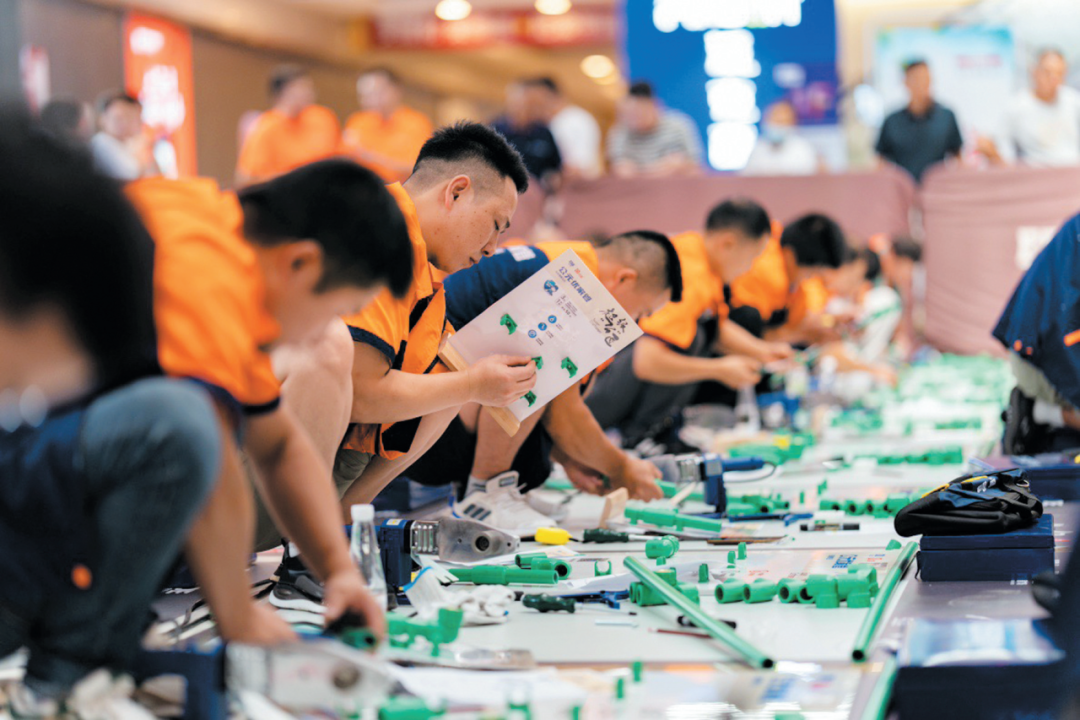Wawasan mendalam ke dalam industri cetakan injeksi: iterasi teknologi, lanskap pasar, dan Paradigms baru untuk pengembangan berkelanjutan
Wawasan mendalam ke dalam industri cetakan injeksi: iterasi teknologi, lanskap pasar, dan Paradigms baru untuk pengembangan berkelanjutan
I. Lansekap Industri Global: Pergeseran Fokus dan Persaingan Regional dan Kerjasama
(1) "penyeimbangan kembali" dari fokus manufaktur
Selama dekade terakhir, industri cetakan injeksi telah mengalami pergeseran dari "berbasis biaya" ke "yang digerakkan ganda oleh teknologi dan biaya". Cluster industri yang diwakili oleh Taizhou dan Dongguan di Cina terus meningkat di pangsa pasar cetakan menengah dan tinggi, mengandalkan "Dukungan Rantai Industri Penuh + Dividen Insinyur + Kemampuan Manufaktur Fleksibel". Pada tahun 2023, nilai ekspor cetakan dari Taizhou meningkat 18% tahun-ke-tahun, dengan proporsi cetakan otomotif melebihi 35%, melanggar hambatan teknologi jangka panjang Jerman dan Jepang di bidang ini.
Sebaliknya, pembangkit listrik cetakan tradisional, Jerman, telah melihat biaya tinggi untuk pesanan kecil dan menengah karena "investasi yang berlebihan dalam otomatisasi" selama transformasi industri 4.0. Jepang, dipengaruhi oleh populasi yang menua, memiliki kekurangan 20% teknisi cetakan, dan pangsa pasarnya sedang terkikis oleh entitas manufaktur yang muncul seperti Cina dan Vietnam. Namun, perlu dicatat bahwa Jerman masih mempertahankan keunggulan teknologi absolut dalam cetakan ultra-presisi tingkat aerotif (toleransi <0,005mm), dan Jepang dalam cetakan lensa optik (kekasaran permukaan Ra <0,01μm), sehingga membentuk pola kompetitif global baru "penguncian tenggorokan high-end dan pemisahan aliran rentang tengah".
(2) Permintaan diferensiasi di pasar regional
Pasar Amerika Utara karena pertumbuhan eksplosif kendaraan energi baru (seperti Tesla dan Rivian) dan peralatan medis (seperti Boston Scientific), permintaan untuk cetakan injeksi yang lama dan cepat berubah telah melonjak. Volume pesanan di Q1 2024 meningkat 22% dibandingkan dengan periode yang sama tahun lalu. Dan mereka bersedia membayar premi (rata -rata 15% - 20%) untuk layanan satu atap "cetakan + manufaktur kontrak produksi massal".
Pasar Eropa yang didorong oleh peraturan perlindungan lingkungan (seperti jangkauan dan versi yang ditingkatkan dari ROHS 2.0), persyaratan teknis untuk cetakan material yang dapat terbiodegradasi (seperti cetakan injeksi PLA dan PHA) sangat ketat. Perlakuan permukaan cetakan harus memenuhi standar ganda "tidak ada residu kimia + resistensi terhadap korosi biologis", yang telah memunculkan model pengembangan bersama "desain cetakan + penelitian material dan pengembangan".
Pasar Asia Tenggara dengan perluasan produsen kontrak elektronik (seperti Pabrik Vietnam Samsung dan basis Indonesia Xiaomi), ada permintaan yang kuat untuk pangkalan cetakan standar kinerja tinggi dan pengiriman cepat. Perusahaan cetakan Cina telah mencapai "lingkaran pengiriman cetakan 72 jam" dengan menyiapkan gudang terikat di Vietnam dan jalur perakitan di Thailand. Meskipun harga rata -rata cetakan yang diekspor ke ASEAN menurun sebesar 8% pada tahun 2023, penjualan meningkat sebesar 37%. Ini menyajikan karakteristik "laba tipis tetapi volume penjualan yang tinggi + penetrasi pasar".
Mould_Taizhou jiifeng Mould Co.,Ltd. (jfmoulds.com)
Ii. Inovasi Teknologi: Empat Tren Inti Membentuk kembali industri cetakan
(1) Cetakan Cerdas: Dari "Respon Pasif" hingga "Evolusi Aktif"
Cetakan tradisional adalah alat produksi, sementara cetakan cerdas telah menjadi "terminal data + node pengambilan keputusan". Dengan menanamkan sensor tekanan, sensor suhu, dan pengukur regangan (seperti sensor mikro HBM Jerman yang dapat diintegrasikan ke dalam inti cetakan tebal 5mm) dalam cetakan, lebih dari 200 parameter proses selama proses cetakan injeksi dapat dikumpulkan secara real time. Dikombinasikan dengan algoritma AI (seperti model prediksi proses yang dilatih oleh TensorFlow), ia mencapai:
Prediksi cacat: mengeluarkan peringatan dini tiga siklus sebelum cacat seperti flash dan tembakan pendek terjadi, mengurangi tingkat cacat di bawah 0,5% (laju cacat cetakan tradisional sekitar 3% - 5%).
Penyesuaian parameter yang dioptimalkan sendiri: Secara otomatis menyesuaikan tekanan penahan dan waktu pendinginan berdasarkan fluktuasi batch bahan (seperti deviasi indeks PP Melt ± 0,5g/10 menit), meningkatkan stabilitas proses sebesar 40%.
Prediksi Hidup: Berdasarkan model kembar digital keausan cetakan, secara akurat memprediksi masa pakai rongga cetakan dan slider, mengurangi biaya perawatan cetakan sebesar 25%.
Kasing khas: cetakan haier disesuaikan cetakan laci kulkas pintar untuk perusahaan alat rumah tertentu. Dengan secara langsung menghubungkan sensor dalam bentuk dengan sistem MES pabrik, seluruh proses dari "penempatan pesanan hingga pengiriman produk jadi" sepenuhnya tidak berawak, meningkatkan efisiensi produksi sebesar 30% dan mengurangi biaya cetakan komprehensif sebesar 22%.
(2) Revolusi Materi: "medan perang baru" menembus batas kinerja
Bahan cetakan telah bergeser dari "Ketergantungan pada tingkat baja tunggal" ke inovasi gabungan "bahan gabungan + pelapis fungsional":
Bahan dasar: baja berkecepatan tinggi generasi ketiga (seperti versi yang ditingkatkan dari ASP-60), dengan distribusi karbida yang lebih seragam, mempertahankan kekerasan (HRC 62-64) sambil meningkatkan ketangguhan sebesar 30%, dan kehidupan cetakan (dalam cetakan injeksi GF PA6 + 30%) melebihi 500.000 siklus cetakan. Komposit matriks aluminium (Al-SIC) telah melihat laju aplikasi mereka dalam cetakan injeksi berdinding tipis (seperti cetakan case ponsel dengan ketebalan dinding 0,5mm) meningkat menjadi 18% karena ringannya (dengan kepadatan hanya 1/3 baja) dan konduktivitas termal cepat) (dengan konduktivitas termal 150W/m · k, tiga kali).
Perawatan Permukaan: Lapisan berlian (seperti Deposisi Uap Kimia CVD Diamond) Meningkatkan kekerasan permukaan cetakan hingga 10.000hV, dan ketahanan aus ditingkatkan 10 kali. Dalam cetakan injeksi plastik rekayasa tinggi seperti LCP (polimer kristal cair), kehidupan cetakan telah melonjak dari 50.000 siklus menjadi 300.000 siklus. Pelapis nano-keramik (seperti pelapis komposit al₂o₃ -tio ₂) mencapai "pelumasan diri + resistensi korosi kimia". Dalam cetakan injeksi fluoroplastik (seperti PTFE), gaya demolding berkurang 60%, memecahkan masalah "lengket" lama yang telah mengganggu industri.
(3) Manufaktur Aditif: "Suplemen Mengganggu" untuk Memancing Pembuatan Cetakan
Pencetakan 3D telah beralih dari "verifikasi prototipe" ke tahap "cetakan massal produksi". Teknologi yang diwakili oleh SLM (peleburan laser selektif) dan MJF (peleburan multi-jet) telah mencapai tiga terobosan besar dalam pembuatan cetakan:
Saluran Air Pendingin Konformal: Saluran Air Bor tradisional memiliki efisiensi pendingin yang rendah (perbedaan suhu cetakan ± 5 ℃). Saluran air konformal cetak 3D dapat membuat perbedaan suhu cetakan ≤1 ℃, memperpendek siklus cetakan injeksi sebesar 20% - 30%. Melalui desain saluran air konformal, siklus produksi cetakan kap lampu otomotif tertentu dikurangi dari 45 detik menjadi 32 detik.
Integrasi Struktur Kompleks: Struktur "Slider Hollow + Nested Insert" tanpa perlu splicing mengurangi jumlah bagian cetakan sebesar 40% dan memperpendek waktu perakitan sebesar 50%. Misalnya, dalam cetakan batang dorong jarum suntik medis, rakitan slider 12-bagian asli dibentuk dalam satu bagian setelah pencetakan 3D.
Perbaikan Cetakan Cepat: Ketika suatu produk diulang, pencetakan 3D dapat menyelesaikan modifikasi cetakan lokal hanya dalam 24 hingga 48 jam, dengan biaya yang hanya sepertiga dari perbaikan cetakan pelepasan listrik tradisional. Siklus iterasi produk baru dari perusahaan elektronik konsumen tertentu telah dikompresi dari 3 bulan menjadi 45 hari.
However, it should be viewed objectively: At present, 3D printed molds are still limited in the fields of large size (> 1m molds) and ultra-high precision (tolerance < 0.01mm), and the cost of printing materials (such as nickel-based alloys and titanium alloys) is 5 to 8 times that of traditional mold steel. In the short term, it is a "supplement to traditional manufacturing" rather than a "replacement".
(4) Sustainable Molds: A "Must-Answer Question" for Green Transformation
The global carbon neutrality goal is compelling the mold industry to adopt a dual-track approach of "carbon reduction and recycling" :
Carbon reduction at the manufacturing end: The adoption of dry cutting (replacing emulsion cooling) reduces carbon emissions in the mold processing stage by 40%. The EcoTurn machine tool series launched by German DMG MORI reduces carbon emissions by 1.2 tons per machine tool per year by optimizing cutting parameters and cooling systems. The lightweight design of molds (such as the use of aluminum alloy mold bases and hollowed-out inserts) reduces raw material consumption by 15% to 20%, and at the same time lowers the demand for clamping force of injection molding machines (for every 100kg reduction in mold weight, the energy consumption of injection molding machines is reduced by 3%).
Loop end innovation The mold Remanufacturing industry has emerged. Through the process of "inspection - repair - upgrade", the performance of used molds can be restored to over 90% of that of new molds, with the cost being only 50% to 70% of that of new molds. The number of mold remanufacturing orders on the Xometry platform in the United States increased by 55% in 2023. Bio-based mold materials (such as polylactic acid (PLA) -based composites) account for up to 10% of low-load molds (such as stationery and toy molds), and their life cycle carbon emissions are 65% lower than those of traditional plastic molds.
Mould_Taizhou jiifeng Mould Co.,Ltd. (jfmoulds.com)

Iii. The Breakthrough Path for Chinese Mold Enterprises: Opportunities and Challenges
(1) Technological Breakthrough: The Crucial Battle from "Following" to "Leading"
Chinese mold enterprises have achieved technological leadership in fields such as new energy vehicle battery tray molds (large-scale + integrated), 5G base station shell molds (thin-walled + high-rigidity), and photovoltaic frame molds (weather-resistant + low-cost).
Battery tray mold: NIO's 1500mm×2000mm super-large integrated battery tray mold adopts a "molding + injection molding" composite process, reducing the weight of the tray by 25% and increasing production efficiency by 40%, breaking the foreign monopoly on molds for large structural components.
5G base station mold: The 0.8mm wall thickness base station shell mold developed by Huawei's supplier, through the "air-assisted injection molding + in-mold decoration (IMD)" technology, realizes the integrated molding of appearance parts and structural parts, increasing the yield rate from 60% to 92%.
Photovoltaic frame mold: The ASA co-extruded photovoltaic frame mold developed by the supporting mold enterprise of Tongwei Co., Ltd. has solved the pain points of traditional PVC frames such as "poor weather resistance and difficult recycling". The mold life (under outdoor ultraviolet irradiation environment) has exceeded 80,000 mold times, promoting the recycling rate of photovoltaic modules to increase to 85%.
(2) Brand Building: Breaking Away from the cognitive battle of the "low-cost Label"
For a long time, the overseas perception that "Chinese molds = low price and low quality" urgently needs to be reversed. Leading enterprises are reshaping their brands through a combination of "technology patents + industry standards + benchmark cases"
Patent layout: The mold division of Haitian International has cumulatively applied for over 800 patents, among which more than 20 patents such as "Multi-Component Injection Molding Synchronous Forming Technology" have filled international gaps.
Standard formulation: Participated in the formulation of 10 international standards such as ISO 20430 "General Technical Requirements for Plastic Injection Molds", and incorporated "Chinese process parameters" into global guidelines;
Case output: The Watch band molds provided to Apple's supply chain achieved a "0.05mm tolerance + 500,000 mold life", setting a benchmark for mold quality in the consumer electronics field and driving a 30% increase in brand premium.
(3) Supply Chain Security: Tackling the "Bottleneck" Links
Although China's mold industry accounts for 40% of the global scale, it still relies on imports in high-end mold steel (such as Dievar steel from SSAB in Sweden), precision hot runner systems (such as Husky in the United States), and micro-sensors (such as HBM in Germany), highlighting supply chain risks. The paths to break the deadlock include
Material autonomy: The "RH refining of die steel + electroslag remelting" process developed by Baosteel Special Steel has brought the performance of domestic DC53 steel close to that of similar products from Daido Steel of Japan, and it has been applied in batches in 3C molds.
Core component substitution: The hot runner system independently developed by Haitian Plastic Machinery has a flow control accuracy of ±1% (±0.5% at the international first-class level), and its substitution rate in the mid-range mold market exceeds 60%.
Industry-university-research collaboration: The State Key Laboratory of Mold Technology at Huazhong University of Science and Technology and Dongguan Jingsheng Intelligent jointly established the "Precision Mold Joint Research and Development Center", overcoming the "micron-level mold surface Texching" technology, which has improved the mold demolding performance by 50%.
Iv. The Next Five Years: Six Predictions for Industrial Evolution
1.The "mold-as-a-Service" model has exploded: Mold enterprises have shifted from "selling products" to "selling production capacity + selling technology + selling data", such as providing a full-cycle Service of "mold leasing + charging per mold + process management", which has been first implemented in fields like medical care and auto parts.
2. The "cross-industry technology integration" is accelerating: Drawing on the "topology optimization" of aerospace and the "bionic design" of biomedicine, mold structures will become lighter and more functional. For instance, the mold for automotive bumpers that imitates the honeycomb structure will reduce its weight by 35% while increasing its strength by 20%.
3. The rise of "regional mold ecosystem" : Besides Taizhou and Dongguan, the Chengdu-Chongqing region (relying on the automotive industry) and the northern wing of the Yangtze River Delta (Nantong and Taizhou, connecting with Shanghai's high-end manufacturing) will form new growth poles for the mold industry, with the supporting rate within the region increasing to over 80%.
4. "AI Full-chain Penetration" : From mold Design (Generative Design for automatically generating the optimal structure), manufacturing (AI production scheduling + tool path optimization) to operation and maintenance (predictive maintenance), AI makes it possible to increase the efficiency of the mold industry by 50%.
5. "Technological Reshuffling driven by environmental protection regulations" : The EU's "carbon border tax" and the US "Clean Manufacturing Act" will eliminate a batch of small and medium-sized mold enterprises that fail to meet environmental protection standards, raising the industry concentration (CR10) from the current 15% to over 30%.
6. "Reshaping the talent structure" : The collaboration between mold technicians and algorithm engineers as well as material scientists has become routine. There is a shortage of 500,000 compound talents in "mold + digitalization + new materials", and the reform of vocational education (such as the localization of the German dual system) is extremely urgent.
V. "Long-termism" in the Mold Industry
Injection molds, as the core link of the "mother of industry", have long surpassed the scope of "tool manufacturing" in their development, becoming a comprehensive manifestation of a country's manufacturing competitiveness, technological innovation capacity, and sustainable development ability. Only by adhering to "in-depth technological development + brand upgrading + ecological co-construction" can China's mold industry take the initiative in the global industrial restructuring and move from a "major mold country" to a "powerful mold country". In the future, every milling mark on a mold will bear the era's imprint of China's manufacturing industry's upgrading.
Informasi terkait
Dari mendasar hingga aplikasi, bagaimana ia mempengaruhi hidup kita
2025-07-17
Dari hal-hal hingga aplikasi, bagaimana ia mempengaruhi konsep dasar livesThe kami...
Cetakan injeksi: Dari pemahaman dasar hingga eksplorasi mutakhir
2025-07-16
Cetakan injeksi: Dari pemahaman dasar hingga eksplorasi mutakhir. Introduc...
Huangyan: membangun
2025-06-22
Distrik Huangyan Kota Taizhou dikenal sebagai pulkam cetakan di Tiongkok.
Kartu Bisnis Baru dari Mold Capital sepenuhnya dimulai.
2025-06-19
Baru-baru ini, di situs konstruksi cetakan Huangyan manufaktur cerdas...
Memasuki dunia cetakan injeksi: analisis teknologi dan pengembangan industri dari berbagai perspektif
2025-06-28
Produsen cetakan tong sampah di Tiongkok (jfmoulds.com)......
Menjelajahi cetakan injeksi: landasan manufaktur presisi
2025-07-02
Menjelajahi cetakan injeksi: bagian utama manufaktur presisi di...





